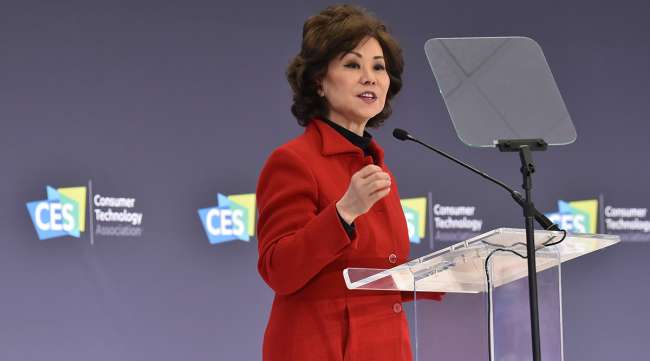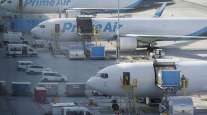Staff Reporter
DOT Unveils Updated AV Guidance at CES 2020

[Stay on top of transportation news: Get TTNews in your inbox.]
The Department of Transportation has released AV 4.0, which serves as the agency’s policy update of autonomous vehicle technology guidelines.
U.S. Secretary of Transportation Elaine Chao announced the guidelines, titled “Ensuring American Leadership in Automated Vehicle Technologies,” at CES 2020 in Las Vegas on Jan. 8. Autonomous technology can take a variety of forms, from lane-departure warning systems and automated brakes to adaptive cruise control and truck platooning.
AV 4.0 acts as a unifying set of principles across 38 federal departments, agencies, commissions and executive offices, and offers guidance to state and local government agencies, technology experts and industry representatives. Specifically, AV 4.0 outlines steps for the development and integration of automated vehicles. Chao noted the guidelines will ensure U.S. leadership in the AV sector.
The Trump Administration is taking another important step to advance the safe and innovative development of AVs with the release of Automated Vehicles 4.0. Read more from @SecElaineChao and @WHOSTP Chief Technology Officer @USCTO Michael Kratsios here: https://t.co/z2A9rtzFyk — TransportationGov (@USDOT) January 8, 2020
“The federal government is all in for safer, better and more inclusive transportation aided by automated driving systems,” Chao said.
The three principles underpinning AV 4.0 are prioritizing safety and security, promoting innovation and ensuring a consistent regulatory approach.
The guidelines also describe the Trump administration’s efforts to support AV technology and opportunities for collaboration, such as federal investments in the AV sector and resources for researchers and members of the public.
“We quickly realized that the autonomous vehicle question is not one that is housed solely at the Department of Transportation,” said U.S. Chief Technology Officer Michael Kratsios, who spoke after Chao. “You have a federal government which has come together and said, ‘We want the U.S. to lead in this domain.’ We’re here for you.”
AV 4.0 builds on AV 3.0, the earlier iteration of the guidelines that was released in October 2018. DOT’s previous guidance on automated driving systems, AV 2.0, was published in September 2017.
Chao characterized AV 4.0 as a natural step in the evolution of traffic safety. She pointed out how AV technology can improve safety, help reduce traffic congestion and offer mobility options for people who face transportation challenges, such as the elderly and the disabled.
“Transportation today is synonymous with innovation, and transportation is going to be as instrumental in America’s future as it has been since our nation’s founding,” Chao said. “We are preparing for the transportation of the nation’s future.”
Aviation, particularly the use of unmanned aircraft systems (UAS), is one area of transportation that is rapidly growing, according to Chao. She said there are more than 1.5 million UAS, or drones, and 160,000 remote pilots registered with the Federal Aviation Administration. These devices can serve useful purposes in terms of agricultural applications and package deliveries.
AV 4.0 establishes Federal principles for the development and integration of #automatedvehicles, consisting of three core focus areas: (thread) pic.twitter.com/LJCRxbMucD — TransportationGov (@USDOT) January 8, 2020
Chao reminded listeners that the public comment period on DOT’s Notice of Proposed Rulemaking on the remote identification of drones ends March 2. The proposed rule would apply to all drones that weigh more than .55 pounds that are required to be registered with FAA.
DOT also is working to streamline launch and re-entry licensing processes to spur growth in the space sector. Chao said there were 34 U.S. space launches and re-entries in 2019, and she reported the global space economy’s value nears $400 billion annually.
“We see in displays at CES, on America’s roads and in our skies such exciting transportation advancements are occurring,” Chao said.
Want more news? Listen to today's daily briefing:




